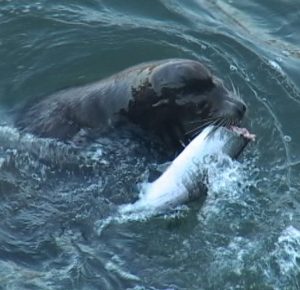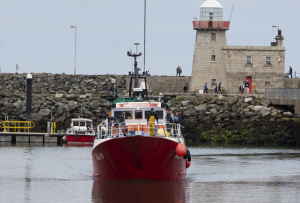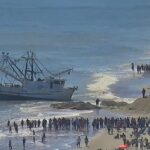Tag Archives: survey
America’s Least Desired Job: Being a Commercial Fisherman, According to Survey
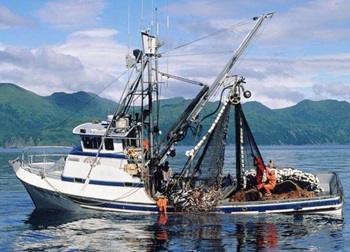 While being a Hollywood actor in California, an investment banker in New York, or an outdoor adventure guide in Colorado may top the list of America’s most coveted careers, we often overlook the jobs that people least aspire to. The survey revealed some interesting results. Among Americans, the job they would least be willing to do, even if offered double the salary, was that of a commercial fisherman. Commercial fishing is one of the most hazardous jobs in America. Here are some of the other least desired careers among Americans: more, >>CLICK TO READ<< 07:57
While being a Hollywood actor in California, an investment banker in New York, or an outdoor adventure guide in Colorado may top the list of America’s most coveted careers, we often overlook the jobs that people least aspire to. The survey revealed some interesting results. Among Americans, the job they would least be willing to do, even if offered double the salary, was that of a commercial fisherman. Commercial fishing is one of the most hazardous jobs in America. Here are some of the other least desired careers among Americans: more, >>CLICK TO READ<< 07:57
Blue cod numbers declining in southern waters
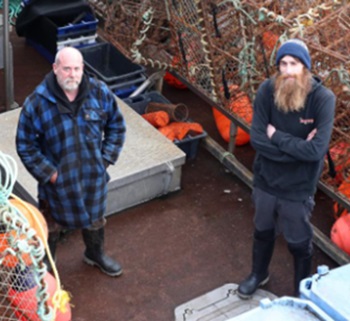 Declining numbers of blue cod in southern waters have prompted a review of catch limits for the 2024-25 year. A Fisheries New Zealand discussion paper says a survey of Foveaux Strait in 2023 concluded the abundance of blue cod in that area had declined by 57% since 2020 and the stock in Foveaux Strait was significantly overfished. “Catches of blue cod in [Southland and Sub-Antarctic area] have consistently declined for the last 20 years.” An average of 49 fishing vessels reported targeting blue cod annually over the last three years in the Southland and Sub-Antarctic waters. But poor catch rates had prompted the association representing those fishers and quota holders to ask for the fishery to be reviewed for the 2024-25 fishing year, starting October 1. more, >>CLICK TO READ<< 21:38
Declining numbers of blue cod in southern waters have prompted a review of catch limits for the 2024-25 year. A Fisheries New Zealand discussion paper says a survey of Foveaux Strait in 2023 concluded the abundance of blue cod in that area had declined by 57% since 2020 and the stock in Foveaux Strait was significantly overfished. “Catches of blue cod in [Southland and Sub-Antarctic area] have consistently declined for the last 20 years.” An average of 49 fishing vessels reported targeting blue cod annually over the last three years in the Southland and Sub-Antarctic waters. But poor catch rates had prompted the association representing those fishers and quota holders to ask for the fishery to be reviewed for the 2024-25 fishing year, starting October 1. more, >>CLICK TO READ<< 21:38

Survey says processors are beefing up for record Bristol Bay run, but it still might not be enough
If the state’s forecasts for the 2022 Bristol Bay sockeye run are even close to accurate, there could end up being millions more fish to catch than anyone is willing, or able, to buy. A survey conducted in January by the Alaska Department of Fish and Game of 15 Bristol Bay-area processors found that the processing companies intend to purchase up to 52 million sockeye this year. However, the department is predicting a record Bristol Bay inshore run next year of more than 73 million fish, which would provide nearly 62 million available for harvest based on the escapement goals for each of the major river systems that feed the Bay. The record-level prediction follows a record inshore run of more than 66 million sockeye last year that lead to a commercial harvest of 40.4 million fish, one of the largest Bristol Bay sockeye harvests ever. >click to read< 12:07
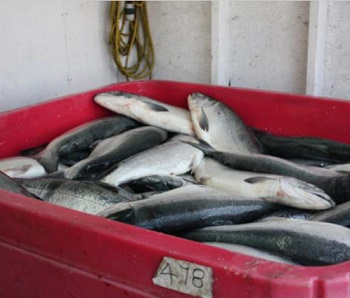
Commercial harvesters “financially devastated” – 79 B.C. commercial salmon fisheries closed for the 2021 season
The abrupt closure of nearly 60 per cent of B.C. salmon fisheries this summer has left commercial harvesters “financially devastated,” according to a survey by the United Fishermen & Allied Workers’ Union. The survey, which was open to both members and non-members of UFAWU-Unifor, found the unexpected loss of income to have been the biggest blow to harvesters following the effects of the pandemic on the industry.,, For a lot of commercial harvesters, the retirement plan is their boats, gear and licence. In ideal circumstances, if you are a licence-holder, you can sell your licence with your boat when you are ready for retirement,,, >click to read< 15:16

A push to boost commercial fishing industry, post-Coronavirus on Long Island
With the pandemics, the industry suffered on Long Island as restaurants all but shut down, wiping away an important client base for commercial fishing. As the economy continues to reopen, Suffolk County has launched a survey aimed at developing a real-time snapshot of the Long Island commercial fishing industry, which officials say has been “especially hard-hit by the COVID-19 pandemic,” according to a press release from the county. The survey is available here. The information and data collected through the survey will highlight the needs of local fishermen and will guide and assist agencies in providing the resources necessary to continue to support a viable and sustainable fishing industry. >click to read< 11:48
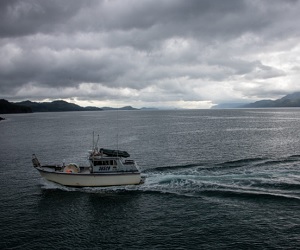
Harvesters remain resilient in facing economic challenges of Coronavirus
No one reading this needs to be reminded that we are in uncharted waters as thousands of Alaska fishermen set out to sea for the salmon season. As a fisherman with two young boys, I felt a deep sense of both privilege and responsibility as I set my nets in the glacier-fed waters of Taku Inlet in late June. Most fishing seasons the biggest questions are: Will the salmon come early or late? Will they be swimming deep or along the shoreline? This summer the questions are: Will Alaska’s independent fishermen financially survive the coronavirus? Will there be buyers willing to pay a decent price for their catch? Will fishermen get access to the personal protective equipment and testing that they need to avoid the spread of coronavirus? Will the long-fought Pebble mine be permitted while Bristol Bay’s fishing fleet is out risking their lives? By Tyson Fick >click to read< 14:47
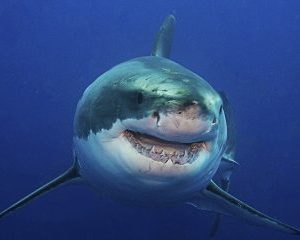
Survey of world’s unprovoked shark attacks singles out South Carolina
South Carolina was singled out in a worldwide survey of unprovoked shark attacks because it doubled its numbers in 2017. The Florida Museum of Natural History released the data, which showed a 2017 world total of 88 confirmed unprovoked shark attacks, 30 provoked attacks, and 18 cases of boats being attacked by sharks. Only five of the unprovoked attacks were fatal worldwide, none of which were in the U.S., says the report. Among the other top states for unprovoked attacks: Hawaii (6), California (2) and one attack each in North Carolina, Massachusetts, Texas and Virginia. Australia was second to the United States in unprovoked attacks with 14.>click to read< 12:12
United Fishermen of Alaska launch survey for fishermen’s input on habitat
 The United Fishermen of Alaska launched its Salmon Habitat Information Project on Tuesday in an effort to keep fishermen and the organization more connected with habitat information across the state. The initiative kicks off with a survey to gain more information from fishermen about habitat conditions in their home fishing grounds and how they would engage with the organization, said Lindsey Bloom, the program manager and a UFA board member. The survey asks fishermen about what conditions they observe in their local environments. One question asks about the words fishermen use to describe salmon habitat, from “spawning bed” to “open ocean,” and another asks how well the taker feels Alaska is managing its salmon populations. The other part is to touch base with how fishermen want to be engaged. As technology has changed, fishermen may use cell phones, text or email, so the UFA wants to stay updated on how to reach them. “We’re launching with the survey because we want to get a better idea of what fishermen really care about, where their strongest interests lie, and how they want to be engaged, and how do they want to be contacted,” Bloom said. Read the rest here 08:39
The United Fishermen of Alaska launched its Salmon Habitat Information Project on Tuesday in an effort to keep fishermen and the organization more connected with habitat information across the state. The initiative kicks off with a survey to gain more information from fishermen about habitat conditions in their home fishing grounds and how they would engage with the organization, said Lindsey Bloom, the program manager and a UFA board member. The survey asks fishermen about what conditions they observe in their local environments. One question asks about the words fishermen use to describe salmon habitat, from “spawning bed” to “open ocean,” and another asks how well the taker feels Alaska is managing its salmon populations. The other part is to touch base with how fishermen want to be engaged. As technology has changed, fishermen may use cell phones, text or email, so the UFA wants to stay updated on how to reach them. “We’re launching with the survey because we want to get a better idea of what fishermen really care about, where their strongest interests lie, and how they want to be engaged, and how do they want to be contacted,” Bloom said. Read the rest here 08:39
N.C Division of Marine Fisheries plans survey of commercial fishermen
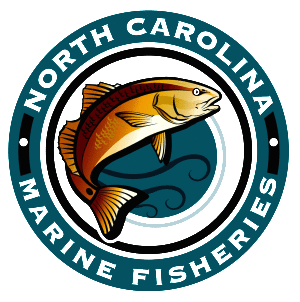 Commercial fishermen who fish in the Atlantic Ocean off of North Carolina may receive a questionnaire in the mail or by phone call in the coming weeks and months for an N.C Division of Marine Fisheries survey. The division plans to contact approximately 300 fishermen between now and August and ask them information about their fishing activity, perceptions, fishing expenses and demographics. The information gathered in the survey will be used to improve the state’s estimates of the economic impacts of commercial fishing and the effects of fishing regulations. It will also assist managers in making informed decisions on fisheries topics. Read the rest here 17:11
Commercial fishermen who fish in the Atlantic Ocean off of North Carolina may receive a questionnaire in the mail or by phone call in the coming weeks and months for an N.C Division of Marine Fisheries survey. The division plans to contact approximately 300 fishermen between now and August and ask them information about their fishing activity, perceptions, fishing expenses and demographics. The information gathered in the survey will be used to improve the state’s estimates of the economic impacts of commercial fishing and the effects of fishing regulations. It will also assist managers in making informed decisions on fisheries topics. Read the rest here 17:11
Sharks Numbers In East Coast At Record High Says NOAA Survey
 There are now more sharks off the U.S. East Coast than there have been in a generation, new research suggests. Scientists conduct the survey by putting out baited lines at a series of locations along the East Coast. When they repeat it, every two to three years, they return to these same spots and use the same techniques, Natanson says. To catch sharks, they put out a 2-mile-longline for three hours, and reel it in. They then measure and weigh the sharks that are small enough to be brought aboard, and tag them. Larger sharks must be put into a sling alongside the boat, and then they measure or estimate its length, Natanson says. Read the rest here 10:11
There are now more sharks off the U.S. East Coast than there have been in a generation, new research suggests. Scientists conduct the survey by putting out baited lines at a series of locations along the East Coast. When they repeat it, every two to three years, they return to these same spots and use the same techniques, Natanson says. To catch sharks, they put out a 2-mile-longline for three hours, and reel it in. They then measure and weigh the sharks that are small enough to be brought aboard, and tag them. Larger sharks must be put into a sling alongside the boat, and then they measure or estimate its length, Natanson says. Read the rest here 10:11
Survey shows number of blue crabs in Chesapeake Bay rising
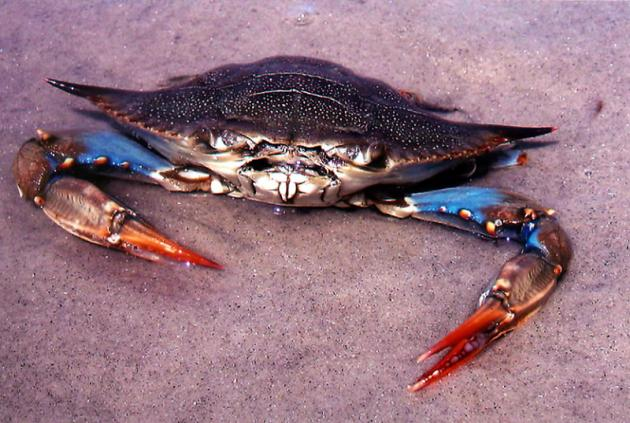 An annual survey by marine officials shows a significant increase in the number of blue crabs in the Chesapeake Bay. The Virginia Marine Resources Commission says the overall bay-wide crab population increased from 297 million crabs to 411 million crabs, a 38 percent increase. The long, cold winter kept the numbers from being higher. The survey shows about 28 percent of all adult crabs in Maryland died due to the cold weather. Read the rest here 16:25
An annual survey by marine officials shows a significant increase in the number of blue crabs in the Chesapeake Bay. The Virginia Marine Resources Commission says the overall bay-wide crab population increased from 297 million crabs to 411 million crabs, a 38 percent increase. The long, cold winter kept the numbers from being higher. The survey shows about 28 percent of all adult crabs in Maryland died due to the cold weather. Read the rest here 16:25
Recieved from Johnny Mann, Hooper Bay western Alaska
Message Body: Hello my name is Johnny Mann from Hooper Bay western Alaska, we fish for halibut from 50 feet of shore to where every the waters permit us to go. We are under csp which I know reading from iphc.int that does not have enough concrete evidence of the biomass/ density on the floor of our region without the set line surveys and fisherman data as our southern regions. As 44 thousand in 03,04 were tagged we have not caught one halibut of that survey. Then in 09 200 were tagged again same result not even one caught in our region 4e. Our northern community scammony bay 40 miles north east of us catches there halibut three weeks later northwest of us about 20 plus miles of us. Migratory route?? We need set line surveys and fisherman data for the concrete evidence on biomass/density of our halibut. Thank you, Johnny. 13:11






